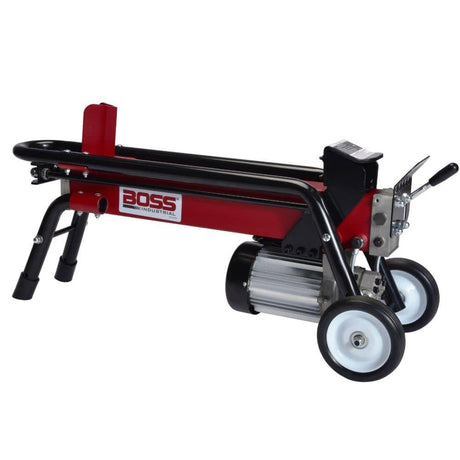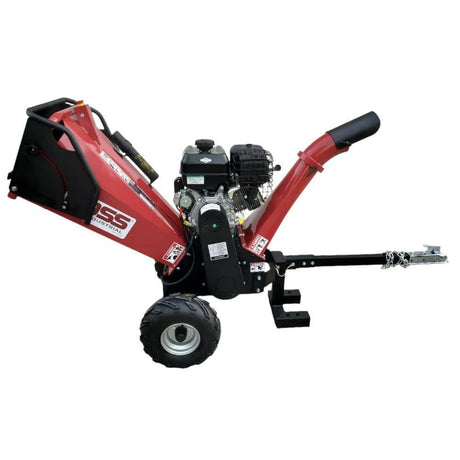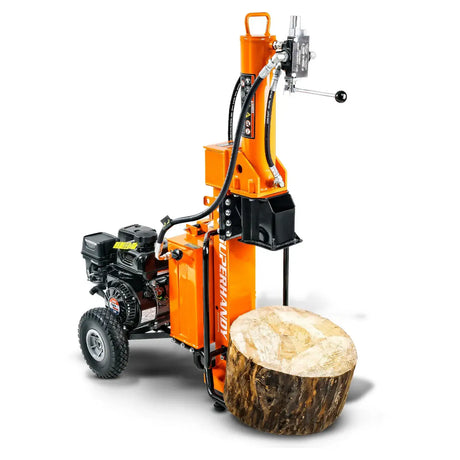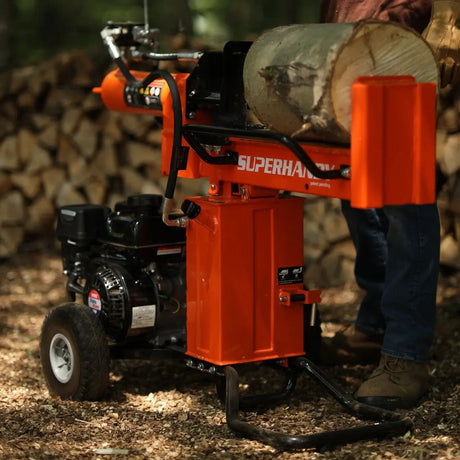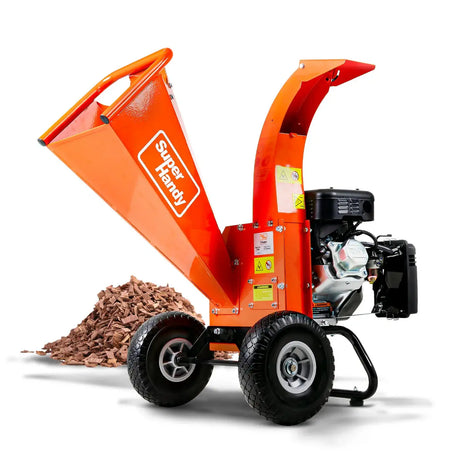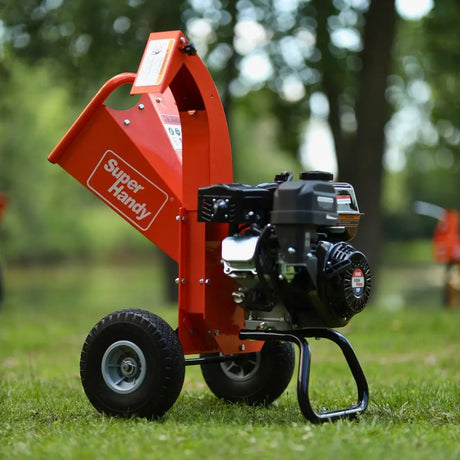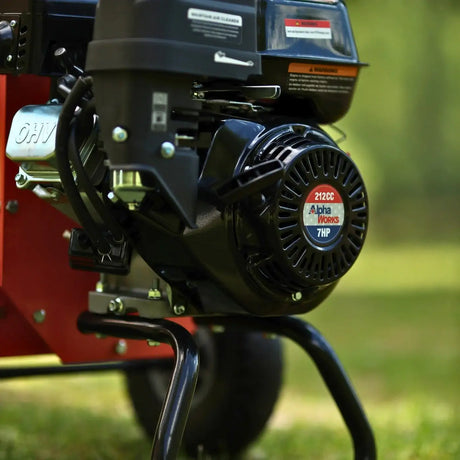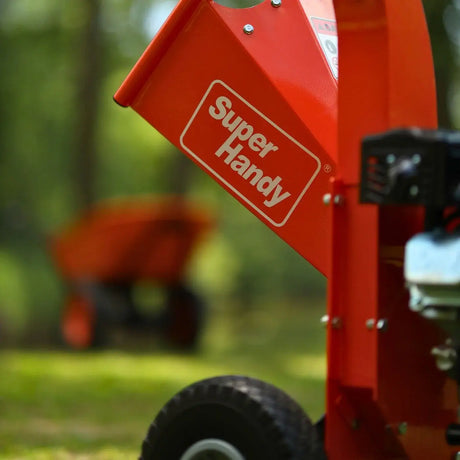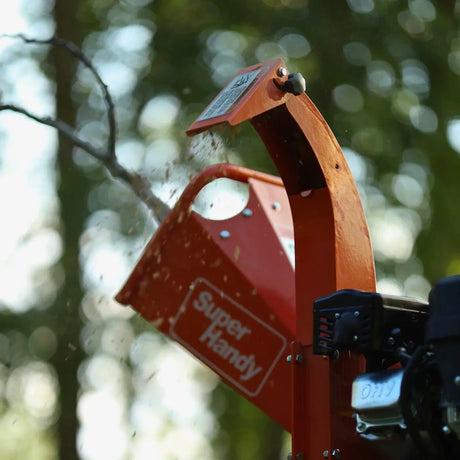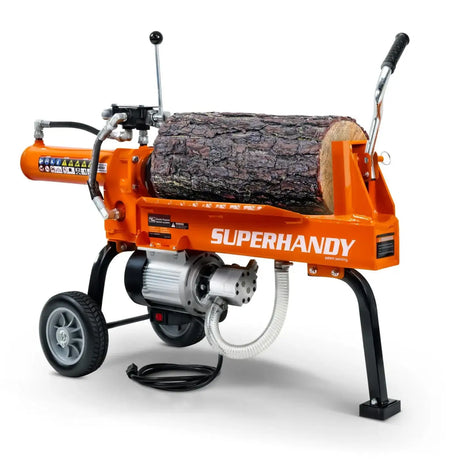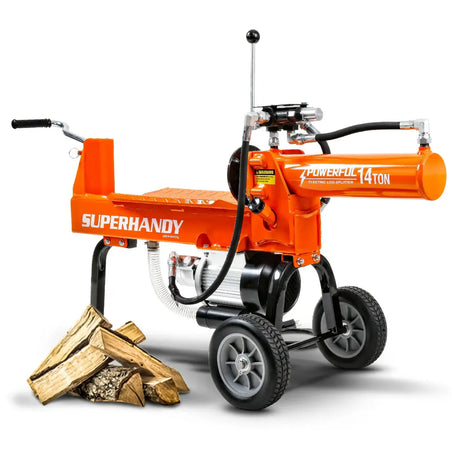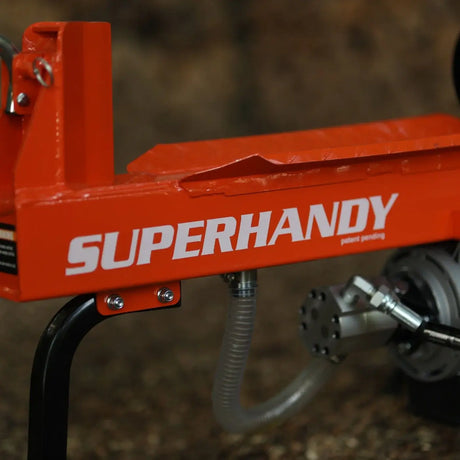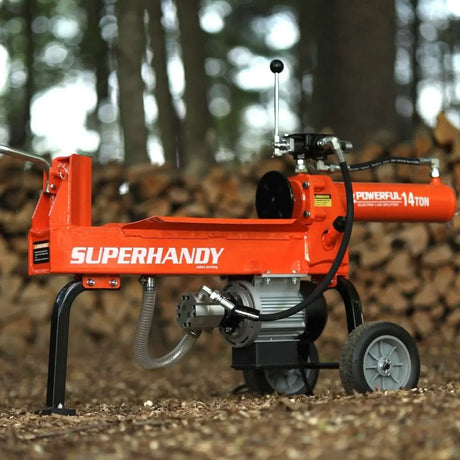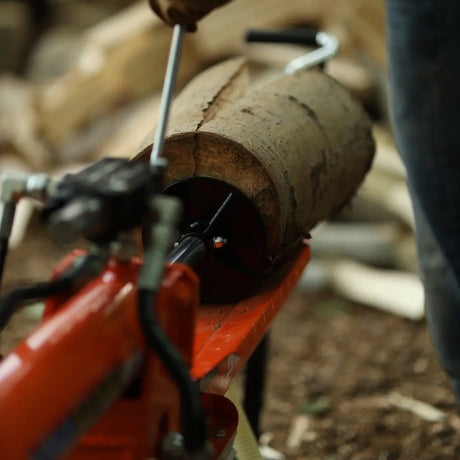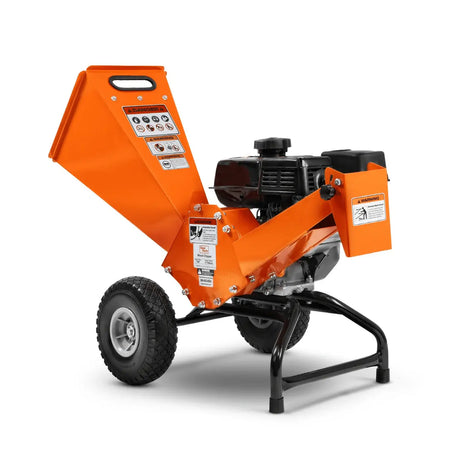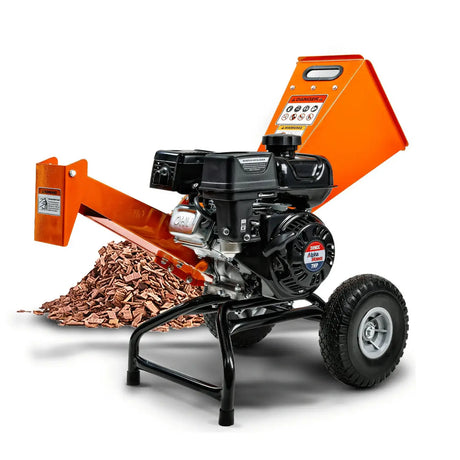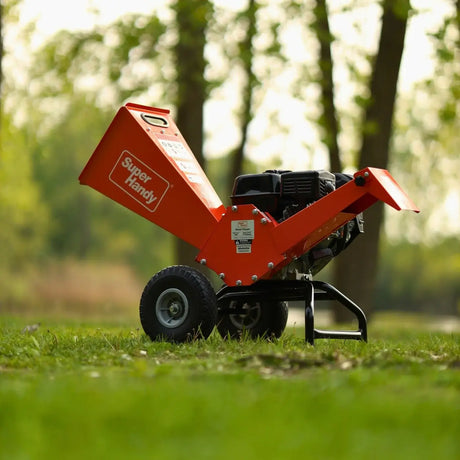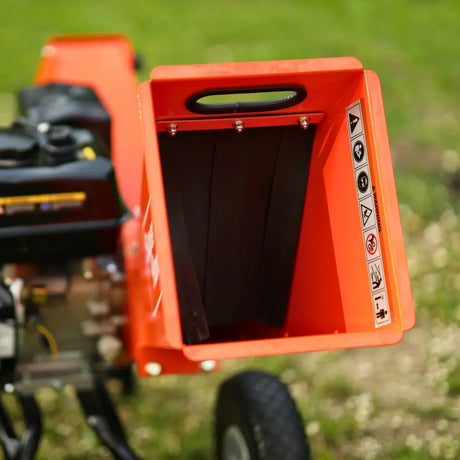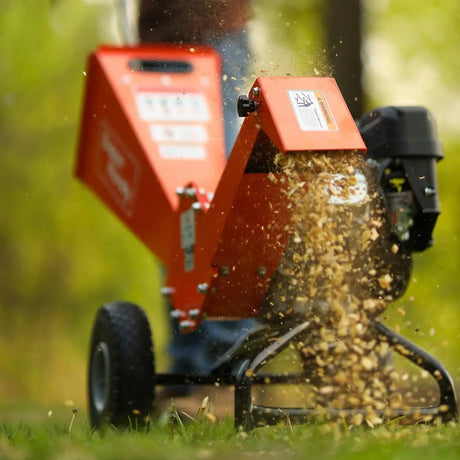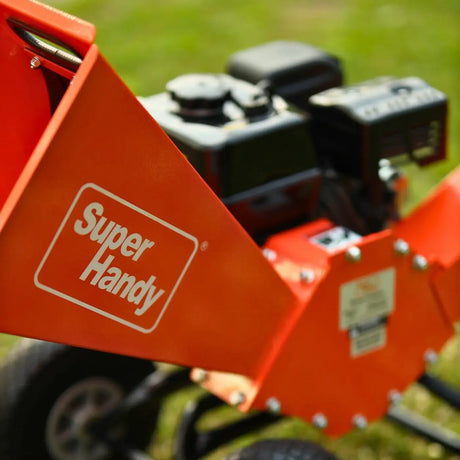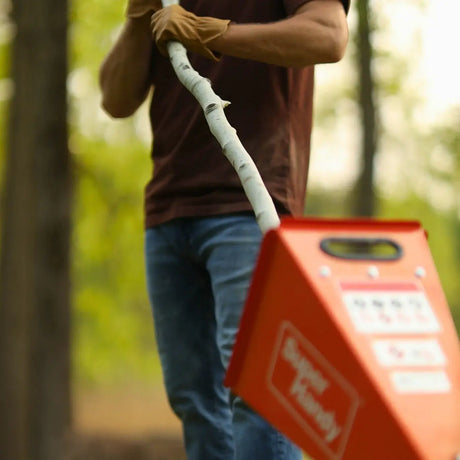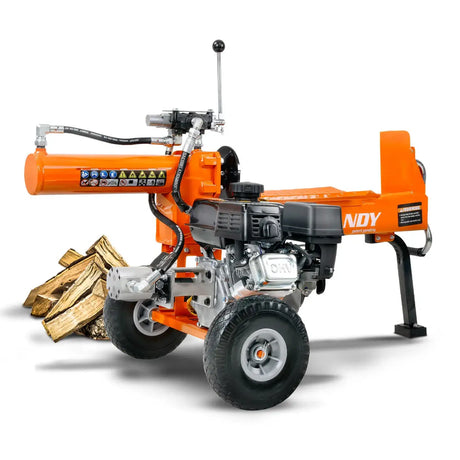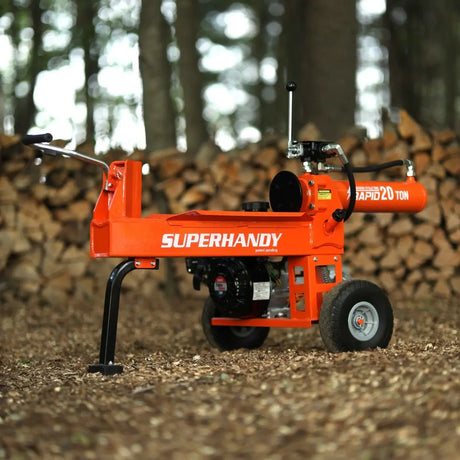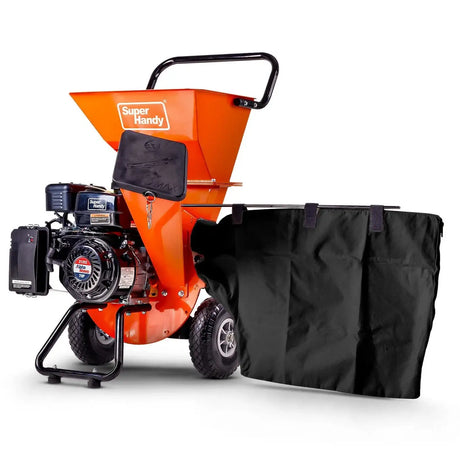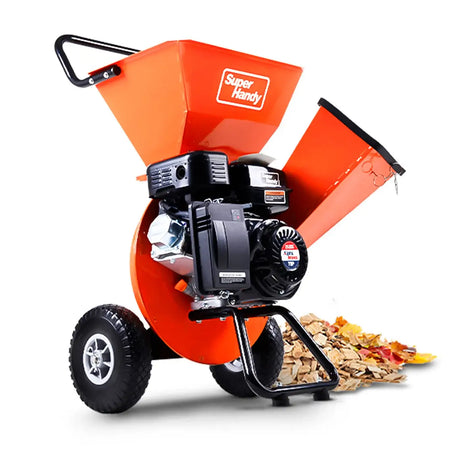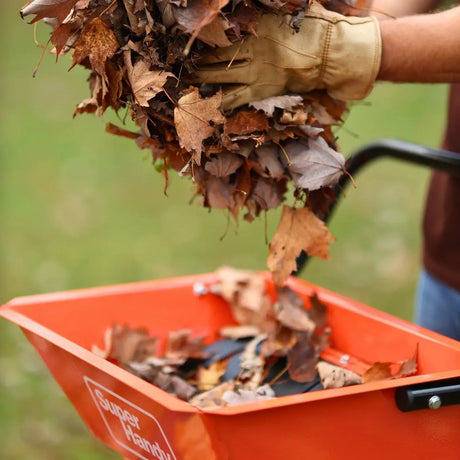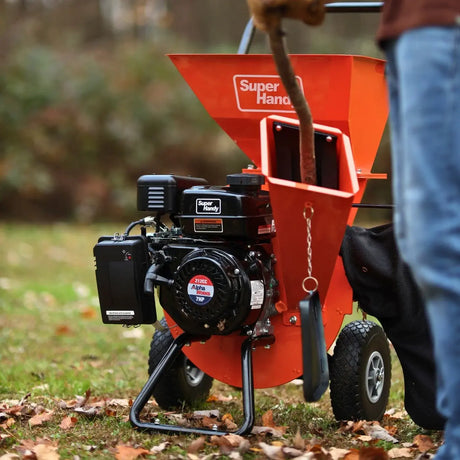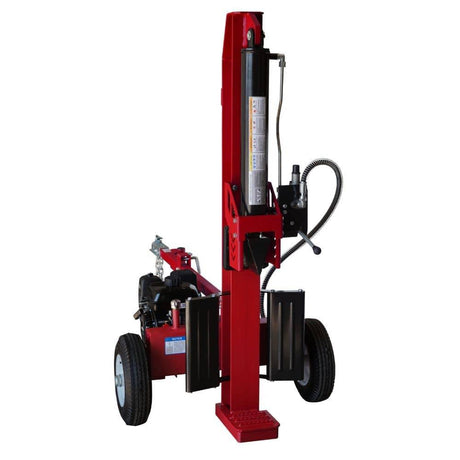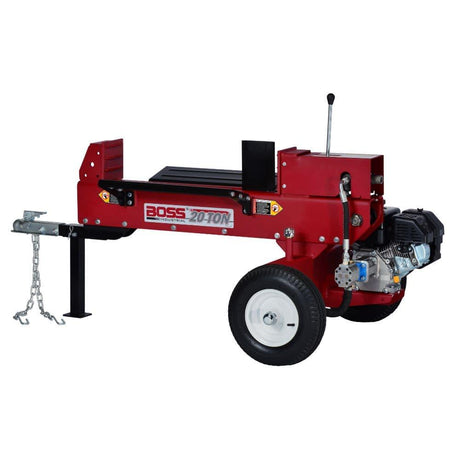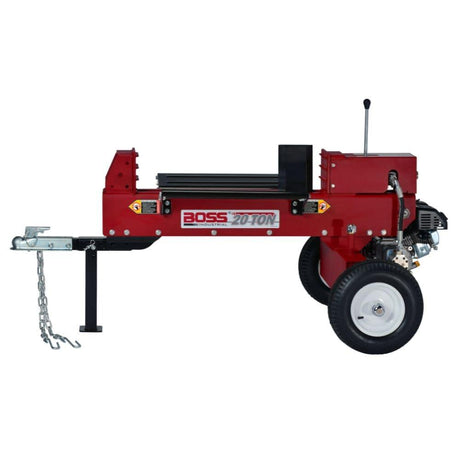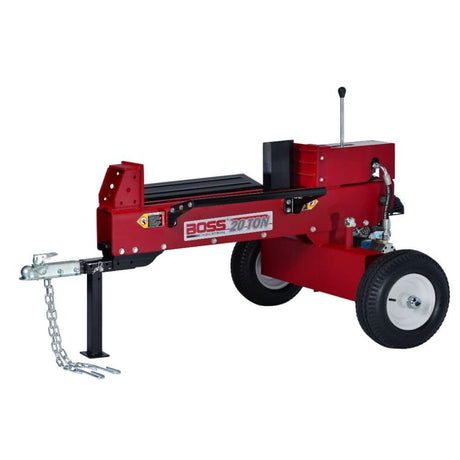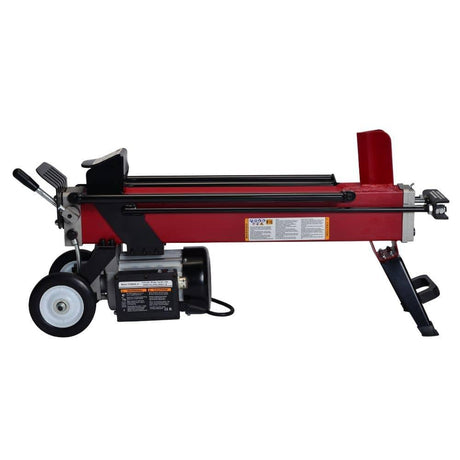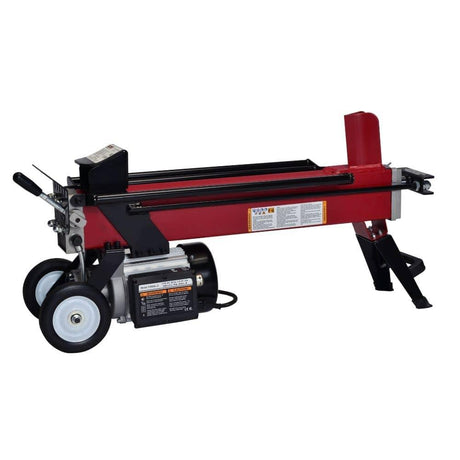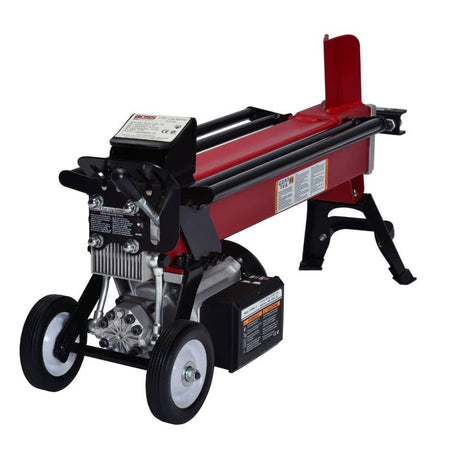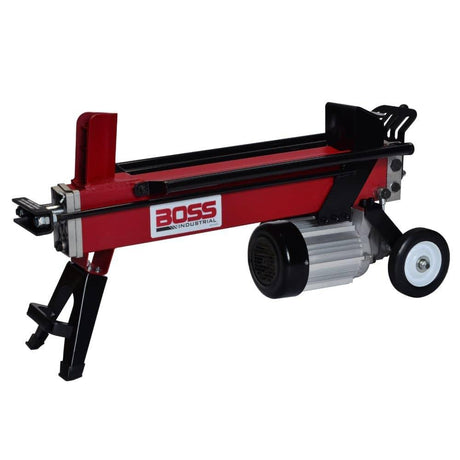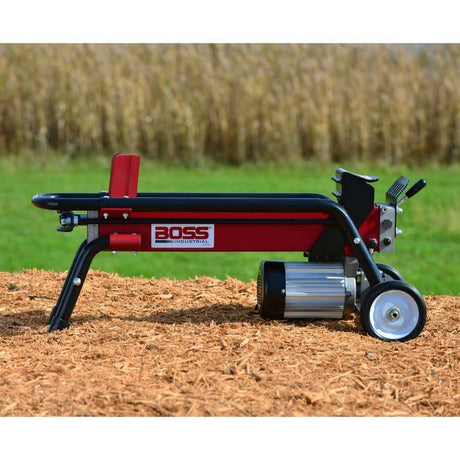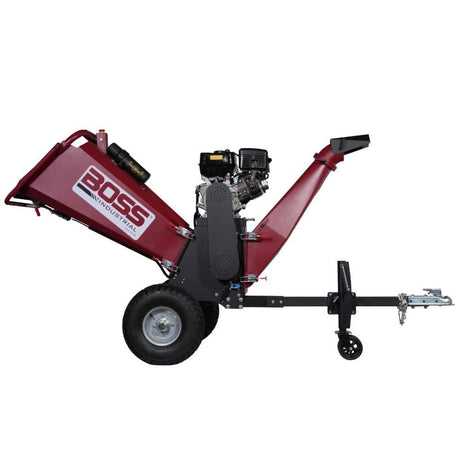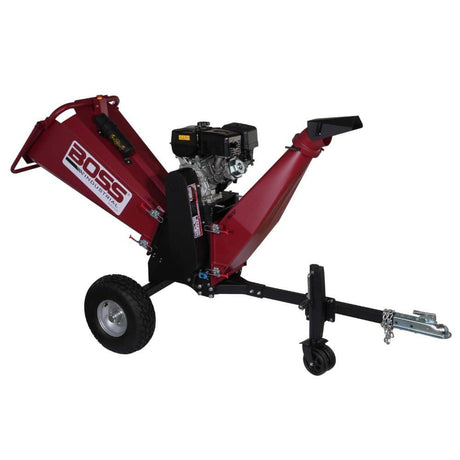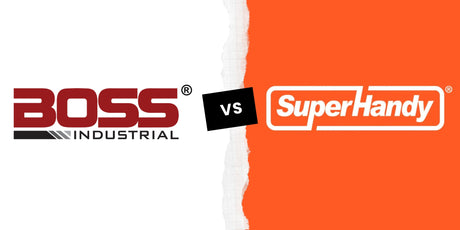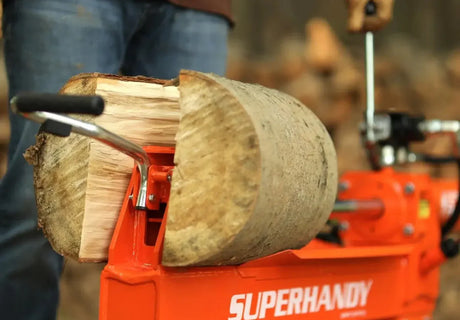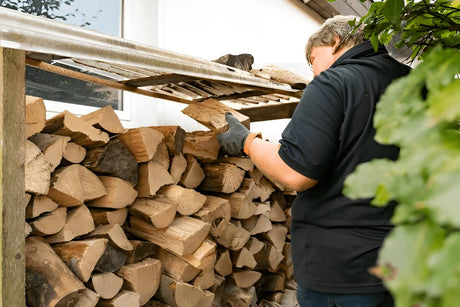What Is a Stump Grinder and Why It Matters
How a Stump Grinder Works
A stump grinder is a powerful tool designed to eliminate tree stumps by grinding them into wood chips. Instead of digging or pulling the stump out, the stump grinder uses a rotating cutting wheel with sharp carbide tipped teeth to chip away the wood until it's below ground level.
For a comprehensive primer on how stump grinders function—including cutting wheel mechanics and key safety features—check out our What Is a Stump Grinder and How Does It Work? Expert Guide for Buyers.

The grinding wheel spins at high wheel speed, moving side to side over the stump. Applying even pressure helps chip away the wood smoothly until it's below ground level. As it chews into the wood, the stumpgrinder reduces it to mulch. Most machines can grind 6-16 inches deep, depending on the model.
Think of it like a giant, motorized cheese grater-but for tree stumps.
If you’re wondering what to do with all the mulch, check our What to Do With Stump Grinding Debris: 3 Smart and Easy Ideas for smart reuse tips.
Benefits of Using One Over Manual Removal
Grinding is hands-down the most efficient and least backbreaking way to get rid of a stump. Here's why:
- No digging or heavy lifting. You don't have to excavate the entire root ball.
- Saves time. What would take hours with an axe or shovel can be done in 15-60 minutes.
- Minimal yard damage. Unlike pulling tree stumps out with machinery, grinding leaves the surrounding lawn intact.
- Clean results. You're left with mulch instead of a crater or pile of roots.
For easy comparisons, check out Top 12 Best Stump Grinders in 2025: Tested & Reviewed by Experts for expert reviews.
If you've ever tried to remove a stump with hand tools, you know how grueling it can be. Grinding takes the pain-and sweat-out of the process.

Who Needs a Stump Grinder: Homeowners vs. Pros
Stump grinders aren't just for pros in tree care or landscaping. They're also a great fit for:
Not sure which model fits your workload? See our What Size Stump Grinder Do I Need? A Guide to Choosing the Right Fit for help matching grinder size to stump diameter and usage frequency.
- Homeowners dealing with 1-3 leftover stumps after tree removal
- DIYers who want to save money on contractor fees
- Landscapers doing cleanup or site prep
- Small property managers maintaining rental yards or lots
- Contractors offering full-service removal and need efficiency
Whether you're a weekend warrior or a full-time arborist, there's a machine out there that fits your job size and budget.
When the grinding is done, learn what to do next with our What to Do After Grinding a Stump: Your Complete Guide.

Types of Stump Grinders Explained
Walk-Behind and Handheld Stump Grinders
These are the entry-level options-perfect for homeowners and small DIY jobs. Lightweight and compact, they're easy to maneuver in tight spots and around flower beds. You guide them manually over the stump, kind of like using a heavy-duty lawn mower.
- Best for: Stumps under 12 inches
- Pros: Budget-friendly, simple to transport, easy to store
- Cons: Slower, limited cutting depth, not great for dense hardwood or large roots
If you've got just one small stump to handle in your backyard, this is probably all you need.

Wheeled and Self-Propelled Units
These machines are the go-to for pros and serious DIYers. They have larger cutting wheels, more power (often 15-35 HP), and let the machine do most of the work.
- Best for: Medium stumps (12-36 inches) and multiple stump jobs
- Pros: Faster, better cutting depth (10-14 inches), handles tougher wood
- Cons: Heavier, more expensive, needs a trailer or pickup for transport
Self-propelled models take the pressure off your back-they drive themselves forward as you grind.
Tracked Stump Grinders for Heavy-Duty Jobs
These beasts are built for commercial work, land clearing, or large tree services. Equipped with powerful engines and tracks instead of wheels, they chew through massive hardwood stumps without slipping, even on hills or soft ground.
- Best for: Large-scale projects and stumps 36+ inches wide
- Pros: Excellent traction, high grinding depth, fast cutting
- Cons: Expensive, bulky, requires transport equipment
If you're clearing a wooded lot or dealing with a job site full of big oaks, tracked stump grinders are your best friend.
Skid Steer and Excavator Attachments
These aren't standalone stump grinders-they're add-ons that mount to heavy equipment you already own. They use your skid steer or excavator's hydraulic system for power and are ideal for pros who already run machines on job sites.
- Best for: Contractors and land-clearing crews
- Pros: Saves cost if you already have the machine, efficient for large jobs
- Cons: Not suitable without the base machine, learning curve for operation
It's a smart upgrade for businesses looking to expand services without buying a dedicated stump grinder.
PTO and Tow-Behind Stump Grinders
These models connect to tractors via a PTO (power take-off) or hitch and are made for rural landowners or agricultural users.
- Best for: Farms, ranches, or properties with large tractors
- Pros: Extremely powerful, uses your tractor's engine, cost-effective if you already own a tractor
- Cons: Not standalone, limited maneuverability in tight areas
Tow-behind units are also great for covering long distances across fields or big properties.

Key Features to Consider Before You Buy
Horsepower and Cutting Power
Horsepower is what drives performance. More HP means faster grinding, deeper cuts, and better handling of dense hardwood.
- Residential use: 6-14 HP is usually enough for softwoods and smaller stumps.
- Professional use: Go 20+ HP to handle oak, maple, or multiple stumps quickly.
Rule of thumb? If the tree stumps are big or tough, don't skimp on power.
Grinding Wheel Design and Teeth Type
This is where the magic happens. A solid grinding wheel paired with sharp teeth-and the right wheel thickness-makes all the difference :
- Size matters: Larger grinding wheels (12-20") grind faster and deeper.
- Teeth: Tungsten carbide is the gold standard-tough, durable, and stays sharp longer.
- Replaceable teeth: Saves money in the long run and keeps performance high.
Pro tip: Keep a few spare teeth on hand. One rock can dull the edge fast.
Depth and Diameter Capacity
Not all stump grinders reach the same cutting depth-and that can limit your results.
- Standard depth: Most grind 8-16 inches deep. That's enough to prevent regrowth.
- Stump diameter: Check max stump width-some smaller stump grinders top out around 12-20 inches. Big jobs need 30"+ capacity.
Think ahead: removing the full root flare saves you time down the road.
Portability and Maneuverability
You'll thank yourself later for choosing something that's easy to move-especially on slopes or around landscaping.
- Wheeled units: Great for flat lawns and easier transport.
- Tracked units: Built for rough terrain and better stability.
- Self-propelled: A game changer if you're working solo or grinding often.
Match the machine to your yard or jobsite-not just the stump. Easy handling and proper position make jobs faster and more efficient.
Fuel Type and Engine Brand
Most stump grinders are gas-powered, but engine brand still matters.
- Honda, Kohler, and Briggs & Stratton are known for reliability and easy maintenance.
- Diesel engines exist on high-end commercial stump grinders-powerful but loud and heavy.
Stick with trusted engines-it makes repairs, parts, and support much easier.
Safety Features and Ease of Use
Don't overlook comfort and protection-it affects how safely (and how long) you can work.
- Emergency stop switch: Should be easy to reach.
- Handlebar design: Adjustable or padded grips reduce fatigue.
- Guarding: Make sure there's proper shielding over the cutting wheel.
- Start system: Electric start saves time over pull cords, especially in cold weather.
If the machine feels awkward in the store, it won't feel any better after 20 minutes of grinding.

What Size Stump Grinder Do You Really Need?
For Small Yards and Tight Spaces
If you've got a few small tree stumps and limited space to move, go compact.
- Best pick: Walk-behind or handheld stump grinders under 14 HP
- Ideal for: Stumps under 12 inches in diameter
- Why: They're lightweight, easy to transport, and perfect for backyards or gated areas.
Think of it like a lawnmower with teeth-simple, effective, and budget-friendly for homeowners.
For Mid-Size Residential and Light Commercial Jobs
Dealing with medium stumps or multiple removals in one visit? Step up your game.
- Best pick: Wheeled or self-propelled stump grinders in the 14-25 HP range
- Ideal for: Stumps between 12 and 35 inches wide
- Why: Faster grinding, deeper cutting, and less fatigue over long jobs
This is where pros and serious DIYers meet-powerful, but still maneuverable.
For Large Stumps, Lots, or Land Clearing Projects
Now we're talking power tools for professionals.
- Best pick: Tracked stump grinders with 25+ HP or PTO/tow-behind models
- Ideal for: Stumps over 35 inches or dozens of stumps
- Why: These machines eat through hardwood, roots, and terrain without breaking a sweat
If your job involves clearing acreage or tackling monster stumps, don't even consider going small.
If you're unsure which size to choose, this guide explains what size stump grinder you need.
Quick Size Comparison by Stump Diameter
| Stump Size | Recommended Grinder Type |
|---|---|
| Under 12 inches | Handheld / Small walk-behind |
| 12–24 inches | Mid-size wheeled / Self-propelled |
| 24–35 inches | High-HP wheeled or tracked |
| Over 35 inches / multiple | Tracked / PTO / Tow-behind commercial |
Bottom line? Match the stump grinder to the job-not just your budget.
Stump Grinder Maintenance and Longevity Tips
Daily Maintenance Checklist
Think of daily maintenance like brushing your teeth-it's the small habit that keeps problems away.
Before and after each use:
- Check oil and fuel levels - Low oil can destroy an engine fast. Top off as needed.
- Inspect teeth for damage or dullness - Sharp teeth mean faster grinding.
- Tighten bolts and belts - Vibration during grinding can loosen key components.
- Clear debris - Remove wood chips and dust from around the grinding wheel and intake vents.
- Look for leaks - Especially hydraulic fluid on commercial models.
To keep your grinder in peak condition, follow our detailed Stump Grinder Maintenance Checklist: By Usage Hours.
Doing this takes 5-10 minutes and can save you hundreds in repairs.
Replacing Teeth and Sharpening Tips
Stump grinder teeth are like blades on a chainsaw-once dull, you lose performance.
1. Sharpen every 10-20 hours of use (sooner with hardwood)
2. Use a stump grinder or carbide sharpener, or send them to a pro
3. Replace teeth if:
- They're chipped, broken, or worn flat
- Sharpening no longer restores bite
4. Always replace in sets to keep cutting smooth and balanced
Pro tip: Keep a spare set of teeth on hand so you never miss a job.
Storage, Fuel, and Cleaning Best Practices
Treat your stump grinder right during downtime and it'll be ready when you need it.
For short-term (week-to-week) storage:
- Drain debris, wipe down surfaces
- Store under a tarp or in a shed to prevent rust
- Keep tires off wet soil or concrete to avoid flat spots
For long-term (seasonal) storage:
- Drain or stabilize fuel to avoid carburetor issues
- Disconnect spark plug and battery
- Grease moving parts (especially cutting wheel bearings)
- Cover vents to keep out critters and moisture
And don't forget-run the engine every few weeks in off-season months if stored with fuel.
After grinding, here’s what to do with the leftover stump and mulch.

Cost Breakdown: Buy vs. Rent
Choosing between renting or purchasing a stump grinder really comes down to how often you'll use it-and how big the job is. Let's break it down.
When Renting Makes More Sense
If you're just removing a stump or two in your backyard, renting is the way to go.
- Average rental cost: $100-$200 per day
- No maintenance or storage hassles
- Access to pro-grade machines without the big price tag
Real-world tip: A homeowner clearing one or two small tree stumps might finish the job in a half-day with a 13-25 HP rental unit.
Best for:
- One-time yard cleanups
- Occasional small projects
- Tight storage space
Long-Term Value of Buying
Buying makes sense if stump removal is part of your business-or you plan to tackle multiple projects over time.
- No ongoing rental fees
- Available when you need it-no scheduling
- Pays for itself after a few big jobs
If you're a landscaper, tree care pro, or a landowner with lots of tree stumps, owning saves time and money in the long run.
Bonus: You can rent it out to others in your area for side income.
Expected Price Ranges by Type and Brand
Here's a quick breakdown to help budget realistically:
| Type | Typical Price |
|---|---|
| Small walk-behind (6–13 HP) | $1,500 – $3,500 |
| Mid-range wheeled (14–25 HP) | $3,500 – $6,500 |
| Commercial track-driven (25+ HP) | $7,000 – $15,000+ |
| PTO & skid steer attachments | $6,000 – $10,000+ |
Wondering how long the job might take? Check out this breakdown of stump grinding timelines.
Recommended Brands to Consider
Not all stump grinders are built the same. Whether you're tackling a single stump in your backyard or running a full-time tree service, picking the right brand matters. Here's a breakdown based on real-world use cases-starting with our top pick.
Best for Homeowners: SuperHandy 9HP Gas Stump Grinder
If you're looking for power without the commercial price tag, SuperHandy hits the sweet spot. It's compact, capable, and made for residential jobs.

Key Features:
- 9HP AlphaWorks Engine - Delivers strong, consistent grinding for small-to-medium stumps.
- 12" Cutting Blade with 6 Carbide Tipped Teeth - Efficient and durable for repeated use.
- Direct Belt Drive - Zero slip clutch, full torque.
- Lightweight, Compact Frame - Easy to move, store, and operate.
Why Homeowners Love It:
- Handles stumps up to 12" with ease.
- Affordable and low-maintenance.
- Great for yards, tight spaces, or seasonal cleanup.
"It's a real workhorse for the price. Perfect for weekend warriors or DIYers with tree work to handle."
Shop Superhandy Stump Grinder →
Other Notable Budget-Friendly Picks
If you're browsing the market, these get honorable mention:
- DK2 OPG777 - 14HP engine, 12" cutting wheel, tow bar included. Great value for small to mid-size stumps.
- Generac Pro Walk-Behind - Lightweight and beginner-friendly, but better suited for very small jobs.
Tip: Look for at least 13 HP in a residential stump grinder for smoother cuts and less bogging.
Best for Commercial Crews and Arborists
Need serious firepower? These are made for all-day, every-day jobs:
- Vermeer - Pro-level cutting speed and depth with patented tech. A go-to in municipal work.
- Barreto SG30 - Track-driven beast. Excellent on rough terrain or when grinding 30"+ hardwoods.
Expect 25-40+ HP engines, hydraulic controls, and track or self-propulsion.
Mid-Tier Stump Grinders for Landscapers & Property Pros
Need more than a homeowner tool but not quite full commercial?
- NorthStar - Honda-powered, heavy-duty, and cuts up to 16" deep. Strong choice for mid-size jobs.
- DR Power Pro Series - Efficient and fairly priced, perfect for landscapers with light-to-moderate stump loads.
Ideal for: small crews, contractors, and property managers looking to maximize ROI without overspending.



